|
|

|
Newsletter
No. 62
|
|
|
| WELCOME |
|
So much cooler now, at the end of the baby snake season and in southwest WA reptile activity really slows down. Snakes and many other reptiles are actively seeking the last few meals before they retreat to their winter refuges. Some species such as tiger snakes are notoriously more ‘cold tolerant’ than brown snakes such as the dugite. Tigers may be encountered even mid-winter if a few sunny days are enough to lure them out to sunbathe, topping up their internal solar battery kind of existence or to catch a frog or two.
We are still running regular days of Snake Avoidance for dogs, but less frequently in these cooler months, so do check out dates below and keep an eye on the online diary. Ultimately it is never a bad time to train or remind a dog that snake encounters are best avoided. Hope life is treating you well as we come into winter.
You would think with all this lockdown stuff going on I would have plenty of time to write these newsletters, but we have been so busy I just haven’t gotten around to it. I hope some of you subscribers do actually read them.
|
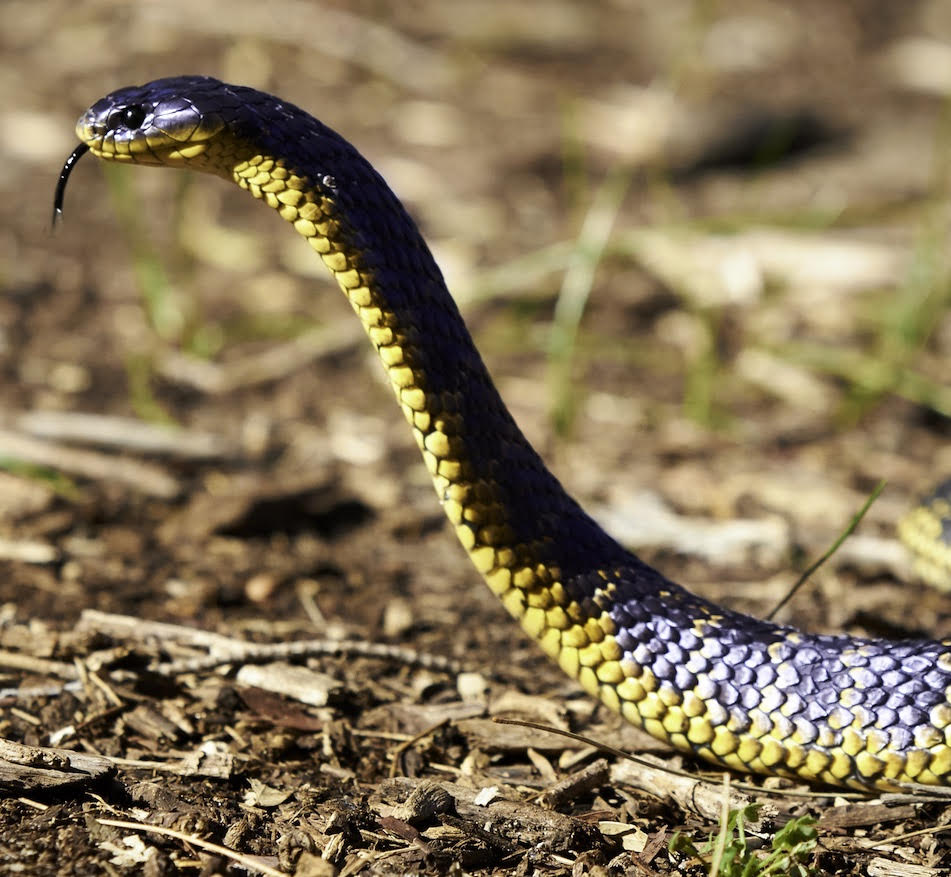
|
|
|
| ALSO, A BIG WELCOME TO: |
|
SINAI pronounced (Sin eye)
Latest member of the team. Animal Ark is Sinai’s first animal/wildlife role since completing her Zoology degree. She came along for a snake handling course and was asked to stay! Up until recently she was working as a barista – so hopefully we can all have great coffee now.
|
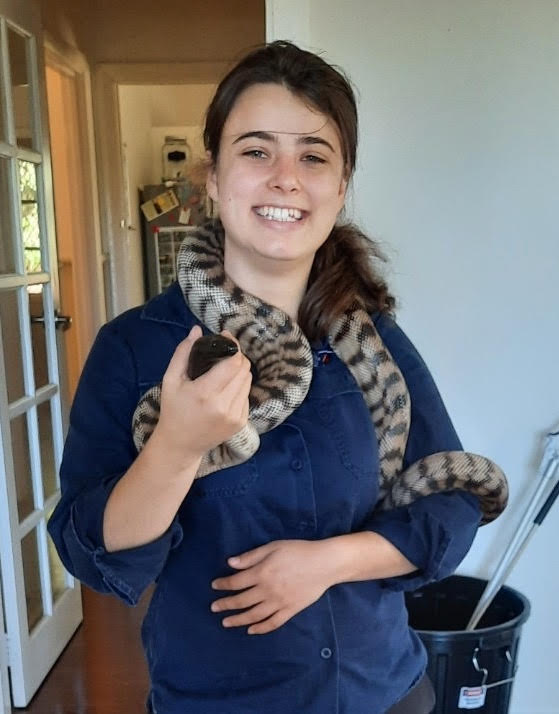
|
|
You may already have met BETH-MARIE who has been with us for nearly 2 years now. She is particularly interested in dog behaviour and is a lead trainer for our Snake Avoidance for dogs. She is very able at dodging dugites, coaxing collies and communicating with humans.
|
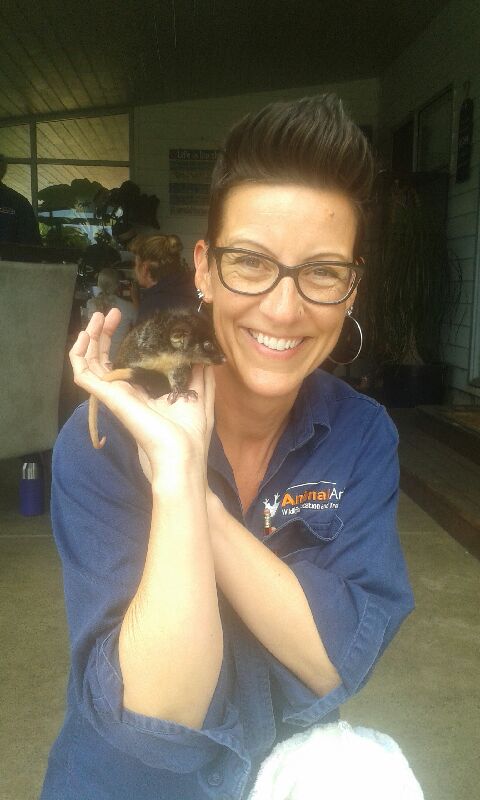
|
|
|
| AUSTRALIA’S LARGEST LIZARD GOES TO THE ZOO |
|
The perentie Varanus giganteus is Australia’s largest lizard and the fourth largest lizard in the world. The Indonesian Komodo dragon is undisputedly the biggest of all but our perentie is not far behind in stature, growing to 2.5 metres in length. These guys can eat a wallaby whole! We had a call recently from a major oil and gas company in Perth as a juvenile perentie had hitchhiked his way to a quarantine transport facility in Perth a long, long way from its home. It was very cold, weak and skinny when I collected it from the Hazelmere depot, but within an hour under a heat lamp it was slurping up some beaten egg and then commenced chasing some crickets around the new enclosure. The recovery was remarkable: initially I wondered if it would survive, you really never know how much the journey had taken out of it and if the lizard’s journey was one of just a few days or a few months. But it (unsexed as yet) was eating mice whole within the week and enjoying warm baths that helped rehydrate the skinny creature. A wildlife officer from Parks and Wildlife Service has collected it now and apparently it will be moving to Perth Zoo to start a new life. The quarantine regulations mean it cannot be returned to its offshore home of origin just in case any virus goes back with it. I’m looking forward to seeing it grow over the next 10 years or so…
|
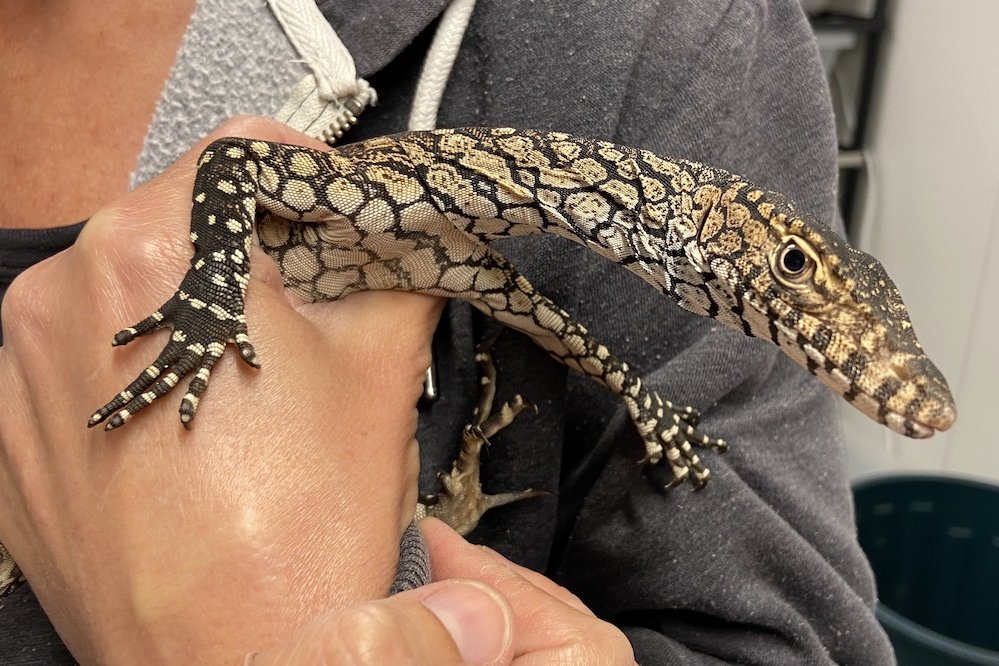
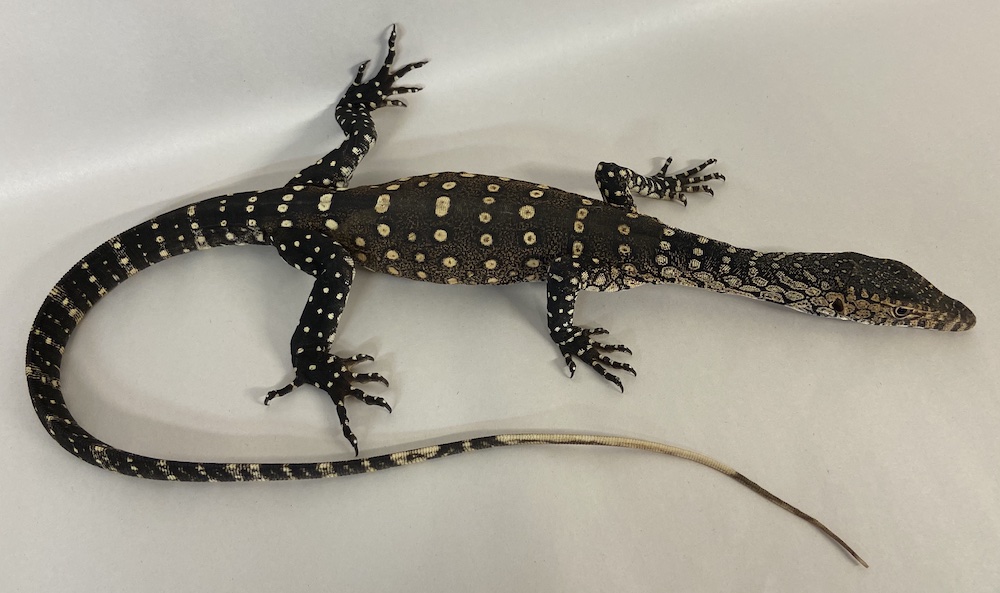
|
|
|
| TONGUES |
|
Whilst caring for the baby perentie lizard I was quite spellbound by his long forked tongue. The tongue flicked slowly in and out picking up scent particles, smelling and tasting the air or the small bowl of beaten egg it received once I got it home - flicking its forked tongue excitedly or eggcitedly as it realised this was food at last. So, thinking about tongues here are a few fun tongue facts.
Tongues help us humans eat, talk and taste, and our tongue is pretty much covered in taste buds except in the middle where we have none at all. We even have some taste buds in the roof of our mouths and down our throat. Other creatures can use their tongues to catch and hold prey, suck, slurp, lure prey, groom, defence and much more. Some creatures like Echinoderms (sea stars and the like) have no tongue at all.
|
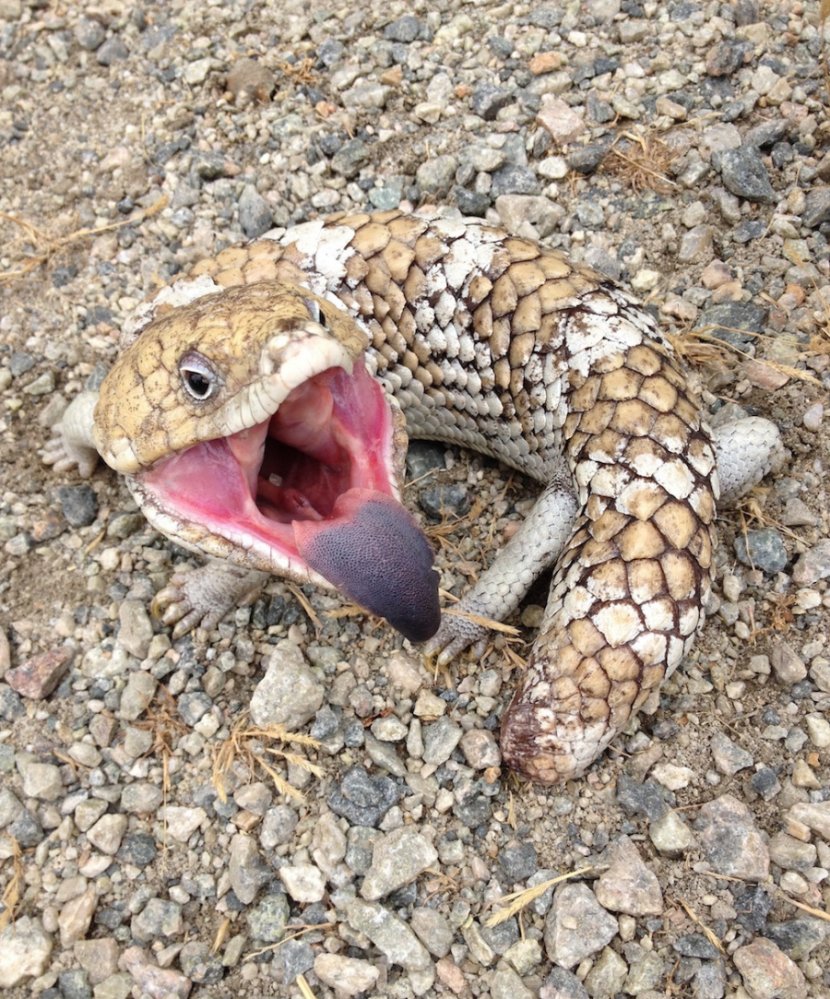
|
|
BLUE WHALE Not surprisingly the world’s largest ever animal has the largest tongue - it may weigh around 2.5 tons, about the weight of an elephant. They don’t appear to have many taste buds though. The tongue helps the whale to filter and squish prey like fish and krill against the baleen plates before swallowing. Scientists think the tongue can taste water, helping blue whales detect other whales nearby and taste/find the right currents as it navigates around the oceans. Whale tongue is a favourite meal of the predatory and well named killer whales - they often kill the whale, eat the protein rich tongue (like a giant steak) and leave much of body behind.
|
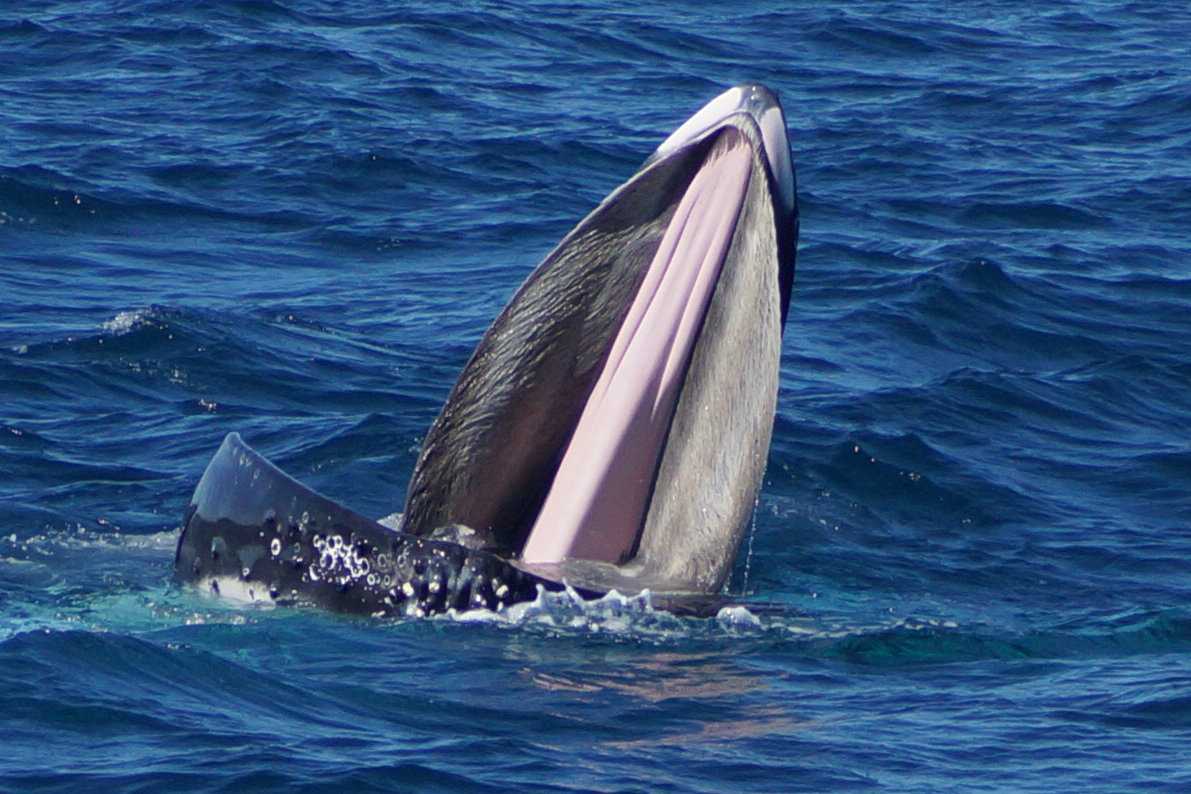
|
|
CHAMELEON Chameleons have amazing tongues that shoot from the mouth to grab and hold prey animals such as insects. The tongue then recoils back into the mouth with the tasty meal adhered to it. Chameleons’ tongues may be twice the length of the lizard itself. I used to keep chameleons in the UK, and it was always amazing to watch them stalk prey such as locusts or flies, swaying from side to side like an innocent leaf as they crept up on their next meal.
The chameleons independently rotating eyes help home in accurately on any target.
|
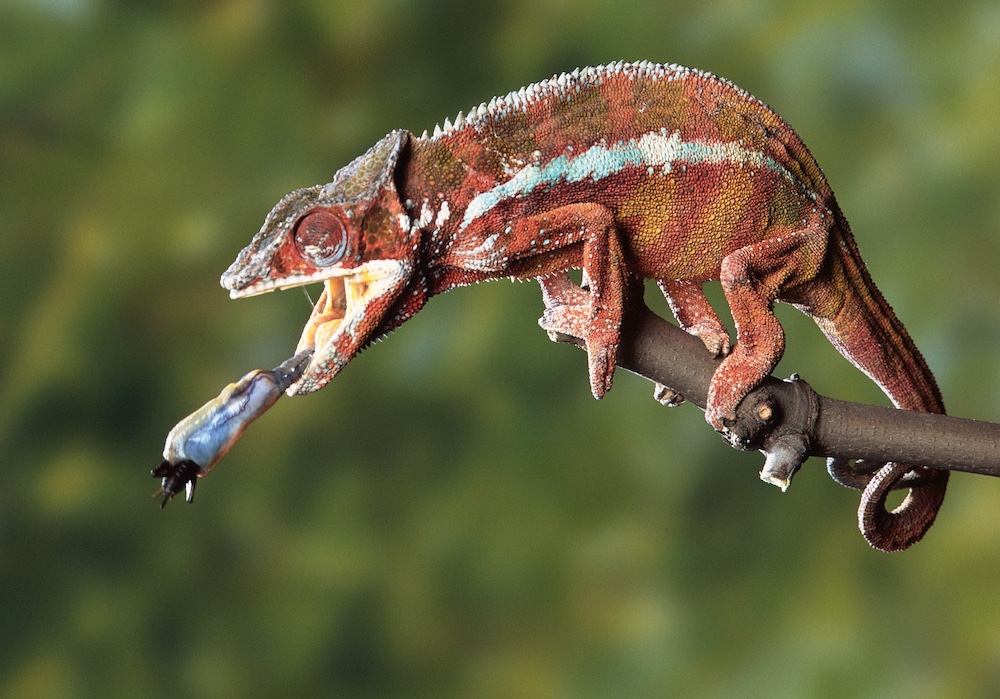
|
|
TONGUE LURE The alligator snapping turtle has a worm like appendage on its tongue. It just sits there, mouth open and waits until a fish literally is lured into its mouth. The African puff adder is one snake that also uses its tongue to lure prey (lingual luring) - the wriggling tongue is slowly moved around like an earthworm to draw amphibians (a favourite prey item), close enough to strike out and catch.
|
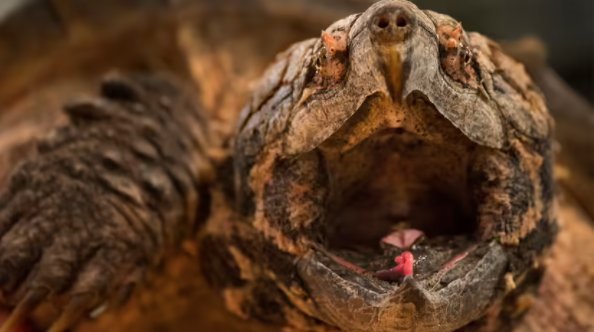
|
|
TOOTHY TONGUE Your humble garden snail is typical of other snails, and slugs, in that it feeds using a tooth-covered tongue. Radula is the correct name for these molluscs’ toothy tongues and the common brown garden snail radula may have some 14,000 tiny teeth neatly arranged in rows, and other species up to 20,000. Few if any other creatures have as many teeth, let alone on a tongue. You can feel the tongue rasping away - it doesn’t hurt if you handle one - and you can even hear snails feeding if you listen carefully enough.
|
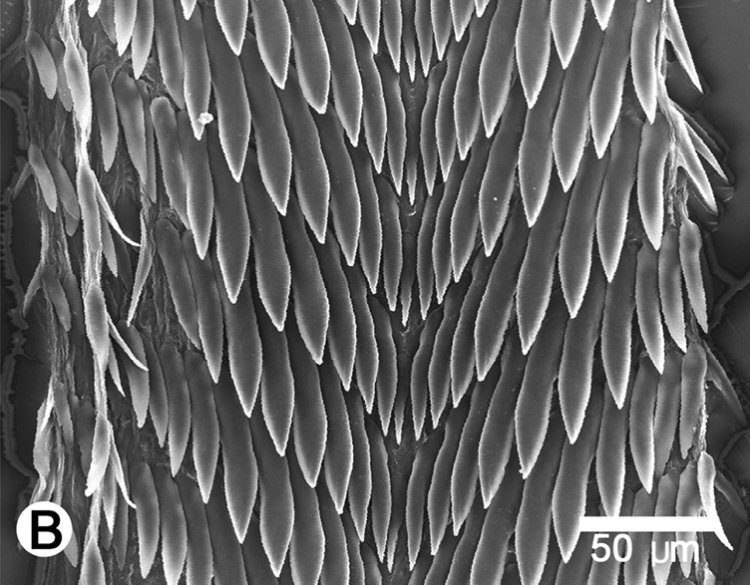
|
|
ANT EATERS Pangolins, anteaters and our very own echidnas and numbats all use their long tongues to actively search for and eat ants or termites, worms and other little creatures. Even the echidna’s scientific name is a tongue twister Tachyglossus - which means ‘fast tongue’. An anteater’s tongue may be as much as 60cm long.
|
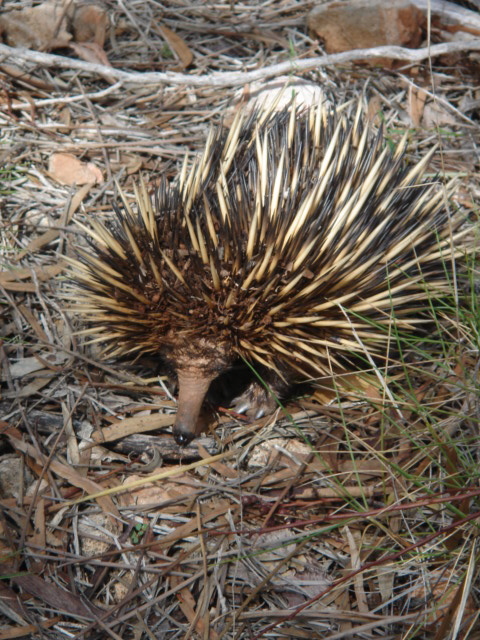
|
|
TONGUE PARASITE Tongue parasites may not be a great dinner table conversation but are quite interesting in terms of amazingly weird wonders of our natural world, as long as the thought of them doesn’t make you gag. One of these creatures is an isopod (crustacean) which may enter a fish though the gills where the female (3cm) attaches itself to the fish’s tongue but the male (1.5cm) a bit further back in the mouth holds on to the gill arches. The female severs the tongue’s blood vessels until it falls off, and by attaching herself to the remaining stub she actually replaces the tongue. They feed apparently on mouth mucus or blood. Occurring worldwide including here in Australia.
Visceral pentastomiasis are two words not to Google unless to want to read about tongue parasites that can be found in humans!!!!!!
|
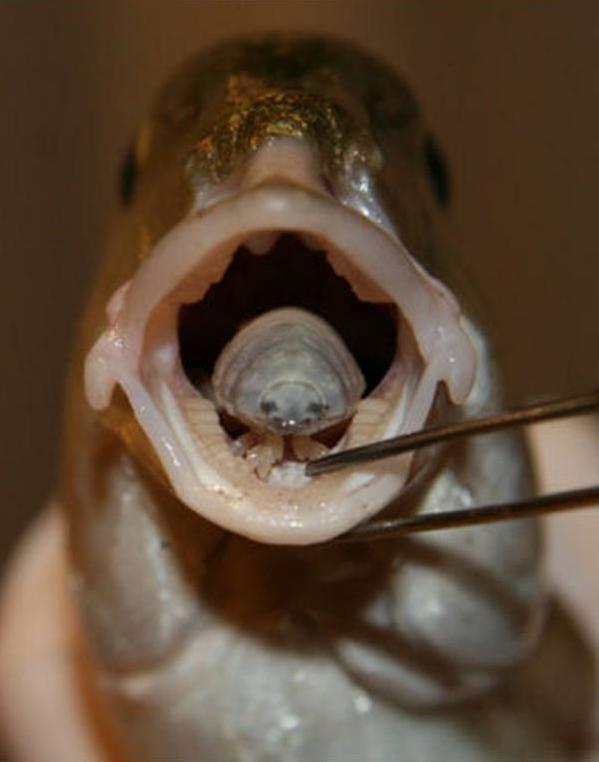
|
|
|
| SNAKE AVOIDANCE TRAINING FOR DOGS - BOOK NOW |
|
Some of our 2021 schedule is up and running on the website. Don’t leave it too late. Once a date and location is fully booked that’s it - no spaces may be left for your preferred appointment. We cannot visit every regional town (although we do try). Fortunately to keep up with demand new dates are added all the time so check the website www.snakeavoidance.com.au for up-to-date information.
We also offer a 10% discount to any vet nurses booking their own dog in for the first session.
|
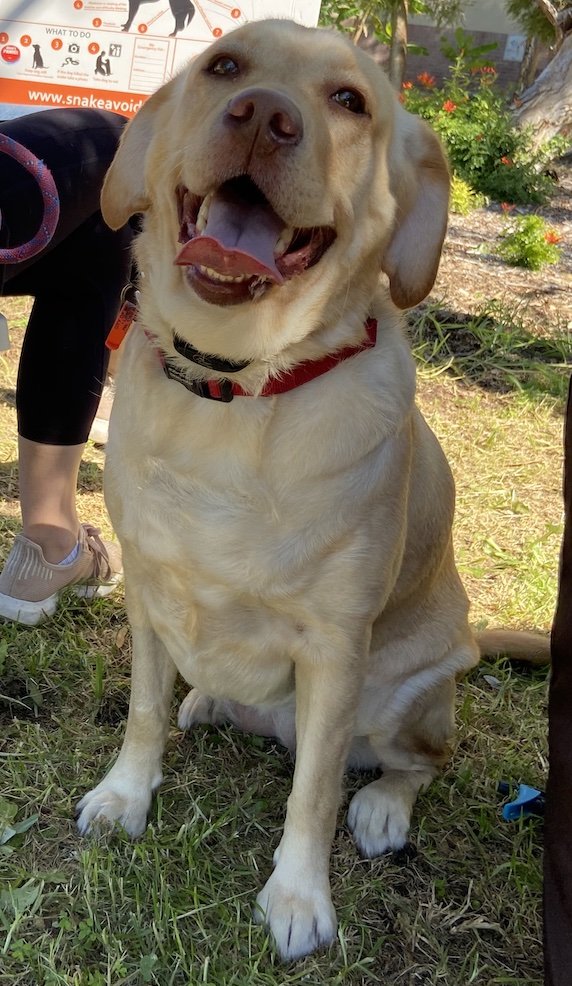
|
|
|
| SPECIAL OFFER |
|
SOLO SNAKE HANDLER KIT discounted price of $425 (usually $555).
Our best seller, a comprehensive snake catching/relocating kit.
Hook, grabbers, bag and gaiters along with a special compression bandage and venomous snake stickers, all in a handy carry bag.
|
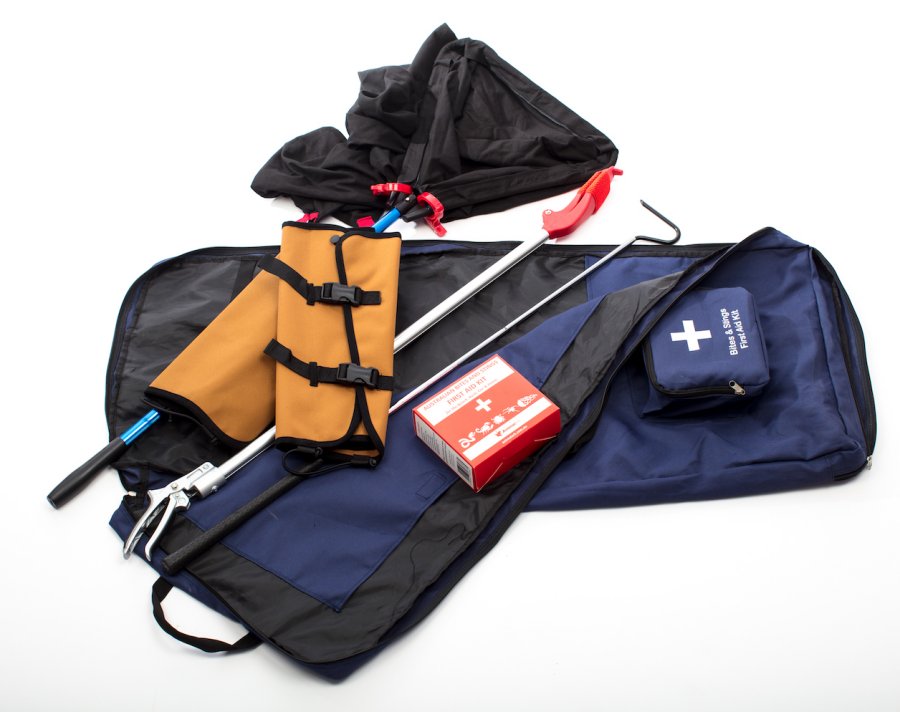
|
|
SNAKE BITE BANDAGES 4 for $60
Prompt first aid is an essential part of dealing with any snakebite. These bandages, along with instructions, make applying compression to a victim’s limb simple - they are reassuringly effective. Should be kept in the car, shed, backpack or any other place where snakes may be encountered.
|
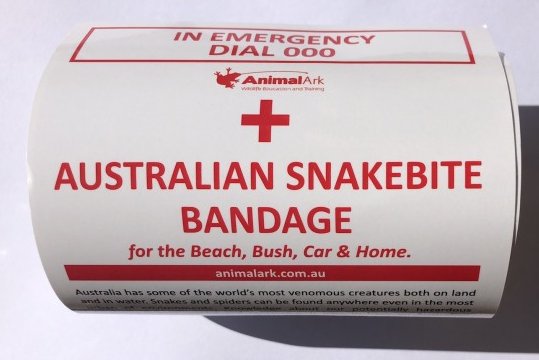
|
|
All include GST and shipping Australia wide. Phone or email orders only.
Offers ends 30 June 2021
Call 08 9243 3044, email shop@animalark.com.au to order.
|
|
|
| Animal in Focus: BARKING GECKO Underwoodisaurus milii or Nephrurus milii |
|
Barking geckos are small lizards with a purplish brown body and a flattened tail. They are speckled with a mixture of small, coloured scales often as white and yellow dots, or bands. Some scales are mini raised bumps, others larger and more textured. Their tails are flat and wide, tapering to a notable point at the end.
Barking geckos often congregate with several individuals being found together. They shelter under loose bark at the base of trees, litter and debris on the ground, amongst rocks, caves or under spinifex - so very adaptable to the varied habitats they can be found in. The barking gecko is one reptile that may still be commonly encountered on very cool nights. Like many geckos they are nocturnal predators feeding on small invertebrates, including creatures such as moths and crickets. The one pictured from Mahogany Creek was only discovered as it was sheltering under a cold wet towel that had dropped to the ground. As is typical this specimen, on being uncovered by me, raised itself off the ground, opened its mouth, and whilst flicking its tail it lunged forward and ‘barked’ at me. This defensive display no doubt intended to deter a potential predator. Sometimes they drop their tails too. Fortunately, this juvenile didn’t lose his tail after our meeting, but I was able to pick it up and place it in a more suitable spot. They are a widespread species and may occur from the west coast across the bottom half of the country to the eastern coast. Barking geckos may be found in parts of WA, NT, SA, VIC, NSW, ACT and QLD.
Breeding often commences from September onwards. Female barking geckos lay 2 soft shelled eggs per clutch and these take around 45-70 days to hatch. Females can lay several clutches a year under optimum conditions. Lifespan of 3-5 years seems typical for these small geckos.
|
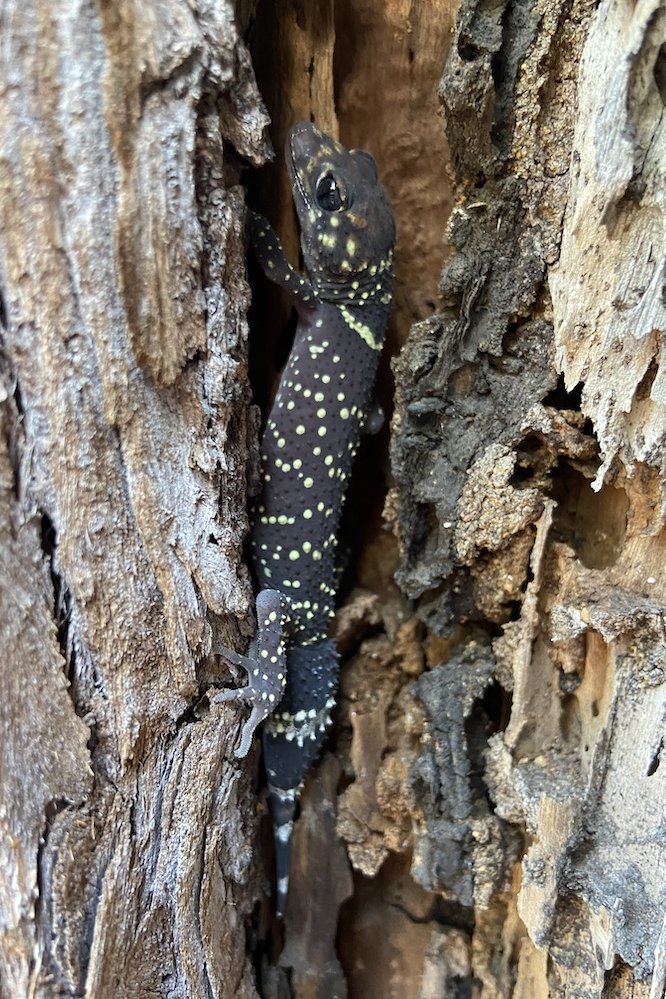
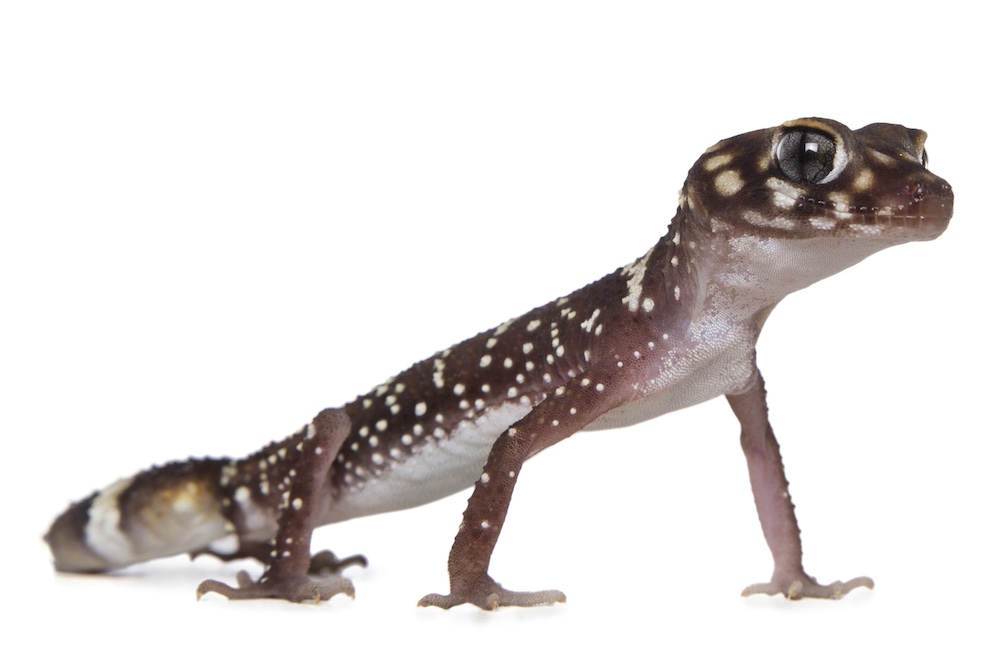
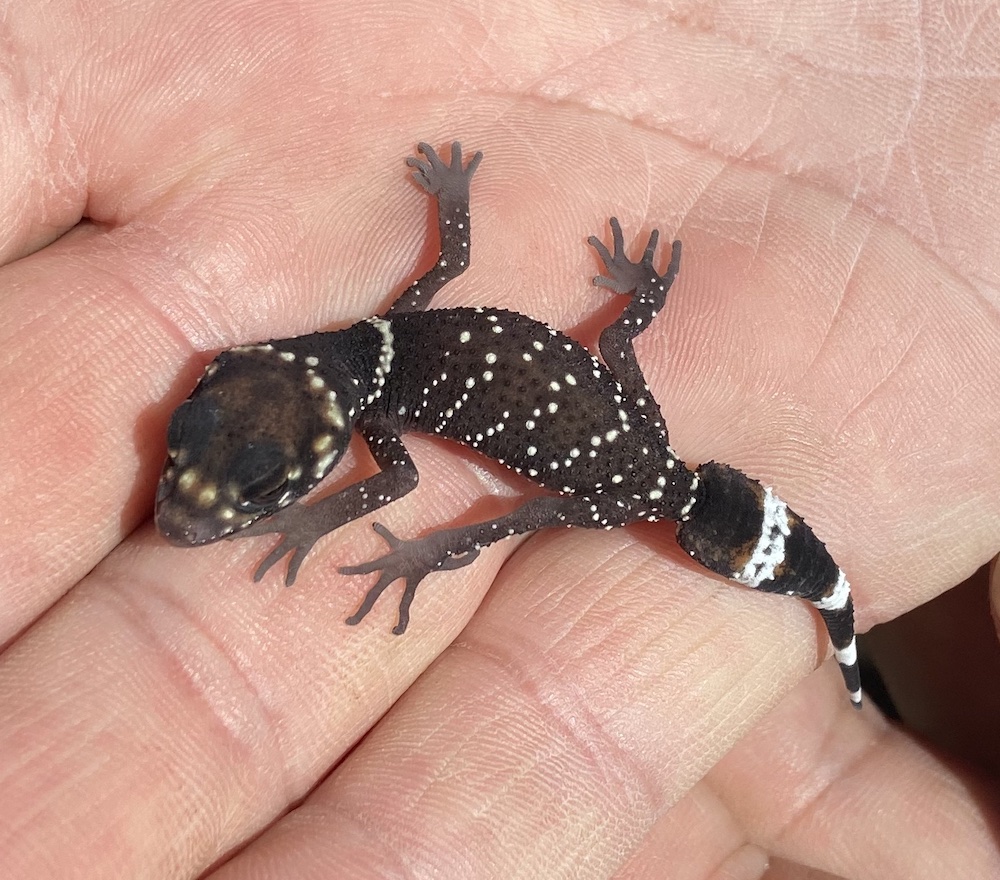
|
|
|
| Upcoming Courses and Events |
Snake Avoidance Training for Dogs
Saturday 19 June - Mahogany Creek, Perth Hills
Sunday 27 June – North Beach
Saturday 31 July - Mahogany Creek, Perth Hills
Sunday 22 August – North Beach
Friday 27 August – Oakford
Sunday 29 August – Jurien Bay, with Wheatbelt Vets
Saturday 4 September - Mahogany Creek, Perth Hills
Sunday 5 September - Perth Hills
Friday 10 September – Bunbury area
Saturday 11 September – Bunbury, Harradines Vets
Sunday 12 September – Bunbury, Harradines Vets
Sunday 12 October – Oakford area
Friday 17 September – Nannup
Saturday 18 September – Nannup
Tuesday 28 September – North Beach
Friday 1 October – Donnybrook
Saturday 2 October – Donnybrook
Tuesday 5 October – Two Rocks
Sunday 10 October – Baldivis area
Friday 15 October – Margaret River area
Saturday 16 October – Margaret River area
Friday 22 October – Bunbury area
Saturday 23 October – Bunbury, Harradines Vets
Sunday 24 October – Bunbury, Harradines Vets
Saturday 30 October – Albany area
Sunday 31 October – Albany area
Monday 1 November – Tambellup WA, with Tambellup CRC
Saturday 20 November – Bunbury, Harradines Vets
Sunday 21 November – Bunbury, Harradines Vets
Saturday 4 December – Albany area
Sunday 5 December – Albany area
Venomous Snake Handling Course
Licensed by DBCA Parks and Wildlife Service
Monday 24 May - Mahogany Creek, Perth Hills
Friday 11 June - Mahogany Creek, Perth Hills
Tuesday 22 June - Mahogany Creek, Perth Hills
Thursday 15 July - Mahogany Creek, Perth Hills
Friday 30 July - Mahogany Creek, Perth Hills
Tuesday 10 August - Mahogany Creek, Perth Hills
Wednesday 25 August - Mahogany Creek, Perth Hills
Friday 3 September - Mahogany Creek, Perth Hills
Thursday 7 October - Mahogany Creek, Perth Hills
Tuesday 19 October - Mahogany Creek, Perth Hills
Thursday 4 November - Mahogany Creek, Perth Hills
Friday 19 November - Mahogany Creek, Perth Hills
Wednesday 1 December - Mahogany Creek, Perth Hills
Tuesday 14 December - Mahogany Creek, Perth Hills
Fauna Handling Course
Monday 21 June - Mahogany Creek, Perth Hills
Tuesday 24 August - Mahogany Creek, Perth Hills
Public Events
Do come along and see us. Bring your family or friends as well.
The Animal Ark Roadshow will be attending the following events:
Wednesday 29 September
Animal Ark Interactive Wildlife Display
Baldivis Library, 17 Settlers Avenue
BALDIVIS
10am – 11am
To book or for more information please contact City of Rockingham
Wednesday 29 September
Animal Ark Interactive Wildlife Display
Safety Bay Library, 197 Safety Bay Road
SAFETY BAY
12pm – 1pm
To book or for more information please contact City of Rockingham
For Snake and Fauna Handler training, events and schools, please see our diary at www.animalark.com.au/diary-of-events.
For Snake Avoidance Training for Dogs see our diary at www.snakeavoidance.com.au/dates-and-locations
Dates subject to change – best to check the websites.
Call (08) 9243 3044, SMS 0466 688 188 or email David and Jenny at info@animalark.com.au to book.
Courses held monthly and as required plus on-site and remote site training available.
|
|


|
|




















